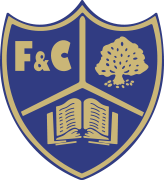Physical Education
Curriculum Intent Statement - Physical Education
(including values and equality)
Fulwood and Cadley aims to provide opportunities to promote and provide healthy activities within the school curriculum. It is hoped that this, in turn will lead the children to follow a healthy and active lifestyle throughout their school days and beyond into adult life.
The Physical education curriculum should be seen as an inclusive not exclusive curriculum. It relates to the overall aims of the school. The P.E. curriculum aims to develop the potential of each individual child. It aims to develop and maintain links between home, school and the community.
Specific aims are:
- To promote an enjoyment of physical activity and a healthy lifestyle.
- To develop a knowledge of safety factors and an appreciation of the principles of safe practice.
- To promote positive attitudes and provide life-long skills to lead a healthy lifestyle.
- To develop cooperation, fair play and the ability to deal with both success and failure.
- To develop physical and mental coordination, self-control and confidence.
- To provide equal opportunities for all.
- To be given the opportunities to plan, practice and evaluate skills taught and learnt.
- To develop an appreciation of physical skills, as well as creative and aesthetic performances, of self and others.
- To develop communication and leadership skills and an ability to work in close cooperation with others.
- To discover their own aptitudes and preferences for different activities.
National Curriculum Statutory Requirements
Key stage 1
Pupils should develop fundamental movement skills, become increasingly competent and confident and access a broad range of opportunities to extend their agility, balance and coordination, individually and with others. They should be able to engage in competitive (both against self and against others) and co-operative physical activities, in a range of increasingly challenging situations.
Pupils should be taught to:
- master basic movements including running, jumping, throwing and catching, as well as developing balance, agility and co-ordination, and begin to apply these in a range of activities
- participate in team games, developing simple tactics for attacking and defending
- perform dances using simple movement patterns
Key Stage 2
Pupils should continue to apply and develop a broader range of skills, learning how to use them in different ways and to link them to make actions and sequences of movement. They should enjoy communicating, collaborating and competing with each other. They should develop an understanding of how to improve in different physical activities and sports and learn how to evaluate and recognise their own success.
Pupils should be taught to:
- use running, jumping, throwing and catching in isolation and in combination
- play competitive games, modified where appropriate [for example, badminton, basketball, cricket, football, hockey, netball, rounders and tennis], and apply basic principles suitable for attacking and defending
- develop flexibility, strength, technique, control and balance [for example, through athletics and gymnastics]
- perform dances using a range of movement patterns
- take part in outdoor and adventurous activity challenges both individually and within a team
- compare their performances with previous ones and demonstrate improvement to achieve their personal best. Physical education – key stages 1 and 2 3 Swimming and water safety All schools must provide swimming instruction either in key stage 1 or key stage 2. In particular, pupils should be taught to:
- swim competently, confidently and proficiently over a distance of at least 25 metres
- use a range of strokes effectively [for example, front crawl, backstroke and breaststroke]
- perform safe self-rescue in different water-based situations.
